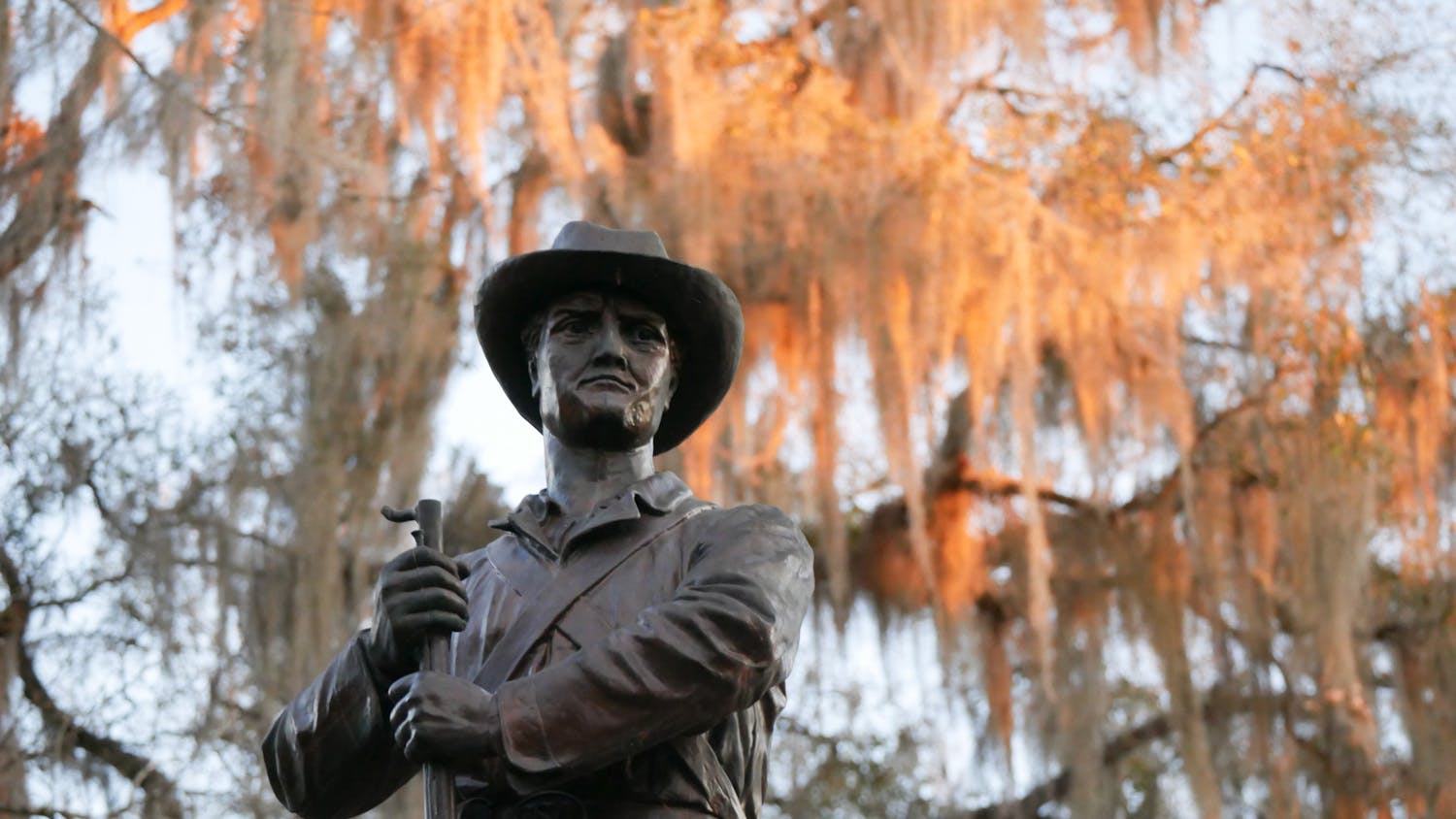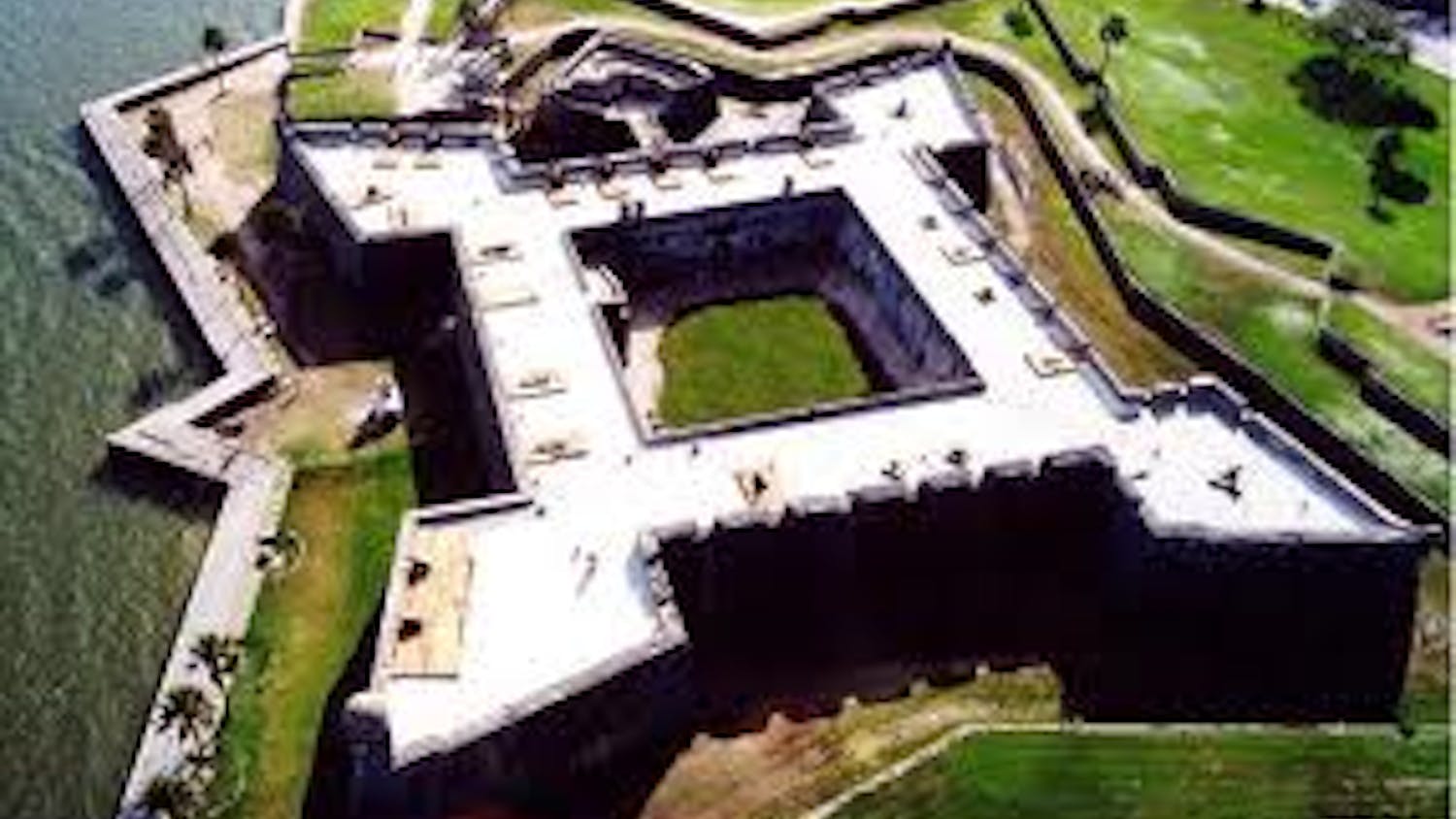A marble obelisk stands in St. Augustine, Florida, honoring and holding the remains of Confederate general William Loring, who spent his early life in St. Augustine and was considered a “local hero” for his military contributions.
While not directly owned by the university, the monument is on a piece of property UF leases from the state of Florida, said Ed Poppell, UF vice president emeritus and liaison to the UF Historic St. Augustine Inc. Board of Directors.
The board is reviewing how to handle the 98-year-old monument after residents of St. Augustine suggested the monument is offensive and needs to be relocated.
The City of St. Augustine has received similar suggestions from residents about another Confederate monument on city property. St. Augustine city commissioners voted last week to add educational plaques to this monument.
In early June, Poppell developed and presented 13 options for the Confederate monument on UF-managed property, Poppell said. The UFHSA Board of Directors selected four options to be developed further.
The UFHSA Board of Directors is composed of historians, scholars, architects and local residents, Poppell said.
“They know more about St. Augustine (and its history) than anyone,” Poppell said.
The first option Poppell presented was naming the park the monument is on. He said it would provide more balance and reflection on slavery and the Civil Rights Movement.
The second option was to add information to the monument that would provide a “complete story” of why the monument was erected, he said.
The third option was to place a monument nearby describing slavery and the Civil Rights Movement.
The last option was to partner with the Lincolnville Museum & Cultural Center of St. Augustine and the Fort Mose Historical Society to provide educational events and discuss the aforementioned options, Poppell said.
“It’s important in this case that we do what is best for St. Augustine and their community,” Poppell said.
More developed versions of these options will be presented at the next UFHSA board meeting in late October, Poppell said.
Some of the options could be implemented shortly after approval while others, like erecting another monument, could take longer.
“This is an issue that shouldn’t be forgotten,” Poppell said. “It shouldn’t be ‘finished.’ We should always be educating and reminding and bringing balance to this conversation.”
Many confederate monuments and confederacy imagery were created in the Reconstruction Era as a way to protest the emancipation of slaves, said Sharon Austin, director of African-American studies and a political science professor at UF.
Confederate flags were also used in the south to directly protest efforts made in the modern Civil Rights Era.
“When people argue that it has nothing to do with race, that is not true,” Austin said.
Supporters of Confederate monuments claim they are a part of U.S. history despite the controversy surrounding them, Austin said. The monuments are also seen as a way to celebrate southern culture and ancestry.
“What the Confederacy stood for was racism, essentially, and the symbols that you bring back from that era… (perpetuate) racism,” said 19-year-old political science student John Etienne-Jones. “I understand the attitudes behind those symbols because I’ve been confronting it basically my entire life.”
Instead of removing confederate monuments, other monuments should be erected to educate people about efforts that began pre-modern Civil Rights Era, Austin said. This would celebrate people who were involved in those movements, especially those who aren’t well-known.
“Everybody knows who Dr. Martin Luther King is, but even people who were involved in bringing about positive changes…,” Austin said, “they may not have their names in history books."





